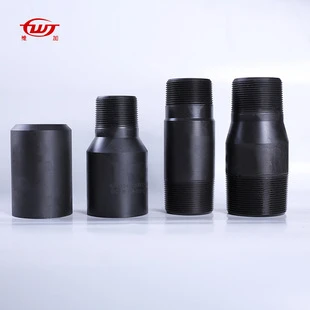- Afrikaans
- Albanian
- Amharic
- Arabic
- Armenian
- Azerbaijani
- Basque
- Belarusian
- Bengali
- Bosnian
- Bulgarian
- Catalan
- Cebuano
- Corsican
- Croatian
- Czech
- Danish
- Dutch
- English
- Esperanto
- Estonian
- Finnish
- French
- Frisian
- Galician
- Georgian
- German
- Greek
- Gujarati
- Haitian Creole
- hausa
- hawaiian
- Hebrew
- Hindi
- Miao
- Hungarian
- Icelandic
- igbo
- Indonesian
- irish
- Italian
- Japanese
- Javanese
- Kannada
- kazakh
- Khmer
- Rwandese
- Korean
- Kurdish
- Kyrgyz
- Lao
- Latin
- Latvian
- Lithuanian
- Luxembourgish
- Macedonian
- Malgashi
- Malay
- Malayalam
- Maltese
- Maori
- Marathi
- Mongolian
- Myanmar
- Nepali
- Norwegian
- Norwegian
- Occitan
- Pashto
- Persian
- Polish
- Portuguese
- Punjabi
- Romanian
- Russian
- Samoan
- Scottish Gaelic
- Serbian
- Sesotho
- Shona
- Sindhi
- Sinhala
- Slovak
- Slovenian
- Somali
- Spanish
- Sundanese
- Swahili
- Swedish
- Tagalog
- Tajik
- Tamil
- Tatar
- Telugu
- Thai
- Turkish
- Turkmen
- Ukrainian
- Urdu
- Uighur
- Uzbek
- Vietnamese
- Welsh
- Bantu
- Yiddish
- Yoruba
- Zulu
tubing and casing
Understanding Tubing and Casing in the Oil and Gas Industry
In the oil and gas industry, the extraction of hydrocarbons from the earth is a complex process that relies heavily on the use of various types of infrastructure, particularly tubing and casing. These two components play critical roles in ensuring the safety, efficiency, and effectiveness of drilling operations. Understanding their functions, materials, and installation processes is essential for anyone involved in oil and gas exploration and production.
What is Casing?
Casing refers to the series of pipes that are inserted into a drilled well to provide support and prevent the walls of the well from collapsing. It serves several vital purposes, including isolating different formations, preventing the contamination of groundwater, and providing a conduit for oil and gas to flow to the surface. Casing is installed in segments, known as casing strings, which are cemented in place to ensure stability and integrity.
Casing is classified into several types, including surface casing, intermediate casing, and production casing. Surface casing is the first layer installed, and its primary function is to protect freshwater aquifers and provide structural integrity for the upper portion of the well. Intermediate casing follows, serving to isolate pressure zones and assist with subsequent drilling operations. Finally, production casing is set in the well to allow the flow of hydrocarbons to the surface.
What is Tubing?
Tubing, on the other hand, is the smaller diameter pipe used to transport oil and gas from the reservoir to the surface after the well has been completed. It is inserted through the production casing and plays a crucial role in the production phase of a well’s lifecycle. Tubing must be able to withstand various pressures and temperatures and is typically thinner than casing.
tubing and casing

The design and material selection for tubing depend on factors such as the specific well conditions, the characteristics of the extracted fluids, and the operational environment. Tubing is manufactured from various materials, including carbon steel, stainless steel, and even composite materials, depending on the corrosiveness and temperature of the fluids being produced.
Installation Process
The installation of casing and tubing involves meticulous planning and execution. After drilling a hole of the desired depth, casing is inserted, and cement is pumped down the casing to fill the annular space between the casing and the wellbore. This solidifies the position of the casing, preventing fluid migration and enhancing the overall stability of the well.
Once the casing is in place, the next step is to install tubing. This is done by running the tubing through the production casing and securing it with appropriate fittings. The installation must be performed with precision to ensure a proper seal, which helps maintain the well's integrity during production.
Conclusion
Tubing and casing are essential components of successful oil and gas operations, each serving distinct yet interrelated functions. Casing stabilizes the wellbore and protects underground water resources, while tubing facilitates the efficient transport of hydrocarbons to the surface. Understanding their roles not only enhances the safety and efficiency of drilling operations but also contributes to sustainable practices in the oil and gas industry. As technology advances and exploration techniques evolve, the materials and methods used for tubing and casing continue to improve, driving the industry toward more efficient and environmentally responsible practices.
-
Tubing Pup Joints: Essential Components for Oil and Gas OperationsNewsJul.10,2025
-
Pup Joints: Essential Components for Reliable Drilling OperationsNewsJul.10,2025
-
Pipe Couplings: Connecting Your World EfficientlyNewsJul.10,2025
-
Mastering Oilfield Operations with Quality Tubing and CasingNewsJul.10,2025
-
High-Quality Casing Couplings for Every NeedNewsJul.10,2025
-
Boost Your Drilling Efficiency with Premium Crossover Tools & Seating NipplesNewsJul.10,2025







